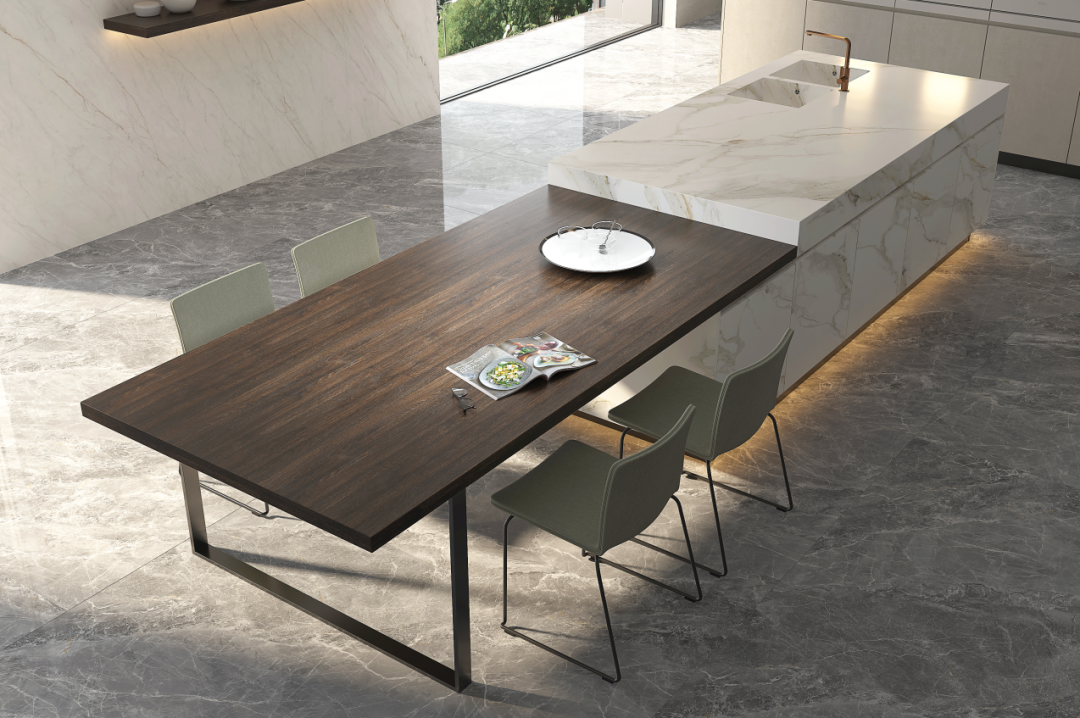Difference Between Sintered Stone And Porcelain Slab-Complete User Guide
Choosing the right material for your building and design plays a vital role in ensuring durability and aesthetics. Sintered stone is a popular choice due to its elegance and sturdiness. This material sets new standards for luxury dining tables, wall backdrops and countertops. On the other hand, porcelain has long been favored for its versatility and ability to meet the needs of different projects. Both materials offer unique benefits that make them highly sought after for a variety of applications. Understanding the difference between sintered stone and porcelain slabs will help you make an informed decision based on your specific needs.
What Is Sintered Stone?
We've already covered “What Is Sintered Stone” in detail in our previous Complete User Guide series, check out the links below for more information.

What Is Porcelain?
We've already covered Porcelain in detail in our previous “Ceramic vs Porcelain” article in the Complete User Guide series, check out the links below for more information.

Comparative Analysis
Similarities
Waterproof performance
Both sintered stone and porcelain slabs have a non-porous character. This property prevents water absorption. The non-porous surface increases durability. It also ensures stain and bacteria resistance. Both materials are therefore ideal for kitchens, bathrooms and outdoors,and MERQI Sintered Stone has a water absorption rate of <0.1%.
Durometer
Sintered stone and porcelain are both fired at high temperatures and pressed in high pressure presses. Both have a high degree of hardness, with sintered stone reaching Mohs 6 and above.More suitable for use with kitchen countertops and kitchen island countertops
Aesthetic point of view
Sintered stone and porcelain slabs offer aesthetic versatility. Both materials come in various colors and finishes. Designers can achieve diverse looks with these options. The ability to mimic natural stone or other materials adds to their appeal. This versatility suits different design preferences and styles.
Differences
Cost
There is a cost difference between sintered stone and porcelain slabs. Sintered stone usually costs more due to its production process. The use of advanced technology and materials also contributes to this. The choice depends on the space in which it will be used.Porcelain slabs are usually a more affordable option. Affordability allows porcelain slabs to be used in both indoor and outdoor spaces.
Installation
Installation techniques for sintered stone and porcelain slabs vary. Sintered stone requires specialized tools and expertise. Often requiring finishing on specialized tools until it arrives at the site for installation, the thickness and weight of this material requires careful handling. Porcelain panels are easier to install due to their lighter weight, and can be simply machined on the job site to accommodate minor variations in size. Thinner options simplify the installation process for walls and floors. Proper installation ensures the longevity and performance of both materials.
Sintered stone and porcelain slabs both offer unique benefits. Sintered stone provides exceptional durability and versatility. Porcelain slabs excel in aesthetic appeal and cost-effectiveness. Both materials share a non-porous nature and aesthetic versatility. Key differences include cost and installation techniques. Sintered stone requires specialized tools, while porcelain offers easier handling. Choosing the right material depends on specific project needs. Consider factors like budget, application, and desired appearance. Each option presents advantages that cater to different preferences and requirements.
If you're looking to remodel your space, MERQI offers free basic design services and samples. We can also provide you with fabrication services based on dimensions at the factory.
MERQI will continue to share a complete guide on sintered stone and porcelain slabs. Our vision is to provide users with innovative design ideas and help them choose the right one for their decorative needs!




